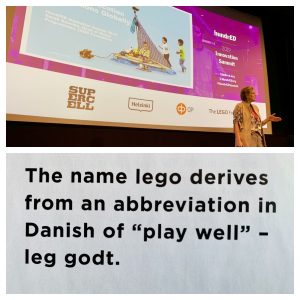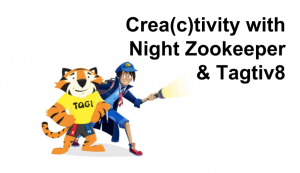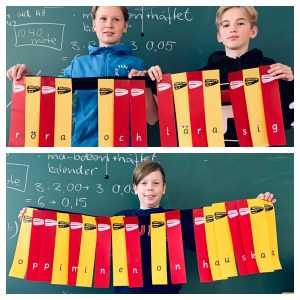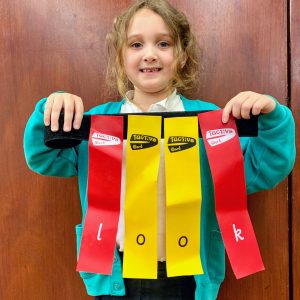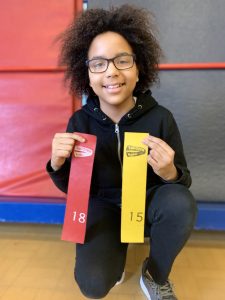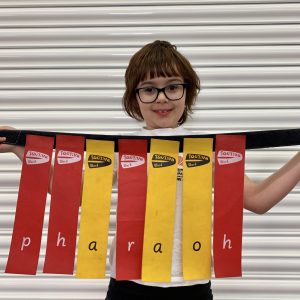This week we were working with a school in London, when we heard an adult say, “What’s the point of playing with Maths?” Rather than reply, we waited to watch her respond to a Tagtiv8 session, knowing full well the impact in advance. Cue a 180 degree about turn: “Now I get it – it’s fun, it’s active and it’s sticky!” The latter term doesn’t just apply to the velcro on the tags and belts. It’s all about the learning – our ‘move and learn’ approaches make learning memorable.
Tagtiv8 and the LEGO Foundation – a Shared Ethos
When we created Tagtiv8, we looked to the LEGO Foundation as our inspiration. Why? Well, the name lego derives from an abbreviation in Danish of “play well” – leg godt. Or you could simply read this awesome article.
We wanted to create a resource that appealed to children of all ages – from Early Years to Primary/Elementary and beyond. As teachers and school leaders, we need to create and develop innovative solutions to health and education issues – crucial in these days of increasingly sedentary lifestyles.
As Sarah Bouchie, Head of Global Programmes at the Lego Foundation says, “Learning through play is all about:
- Curiosity
- Engagement
- Collaboration
- Critical Thinking
- Creativity”
LEGO has ‘bricks’ of different sizes, shapes and colours. Tagtiv8 has tags of different colours – with letters, numbers and symbols. Like LEGO, we provide instructions and diagrams for teachers and children so they know how to play the games. However, this is simply the starting point. Once they get to grips with the simplicity of the format, the imagination kicks in. Teachers are empowered, thinking, “We could use this for fractions, decimals, percentages and more.”
Children as Creatives
Likewise, the children start pushing the boundaries of what’s possible:
- “We could draw a hundred square on the play-ground and then skip with the number tags…”
- “How about walking the tags like you walk a dog?”
- “Maybe we could clap on the tens and hop on the ones.”
- “Why not try hopping over the odd numbers and jumping over the even ones?”
Tagtiv8 children create games with moves, rules, scoring systems and strategic tips to play well and win. They test out their ideas and refine them. They share these ideas and encourage others to twist, morph and blend their own ideas into the mix. Our BEST games are devised and developed by children. Why? Children are naturally creative, curious and know no boundaries. Watching them create their own moves is something very special indeed!
Designing and creating their own games is empowering and rewarding. Imagine the sense of pride the children from Lordship Lane Primary School in London have when they see their game, ‘Tomato Ketchup and Mustard’ being played by children elsewhere in the UK and even in other countries.
Play Starts with the Very Young and Continues
Watching children from EYFS/Kindergarten enter a room – with the tags and Velcro strips strewn across the floor and the colourful buckets and pods in the middle – is wonderful. What do they do? They:
- Pick the tags up
- Jump over them
- Match them
- Put them in lines
- Order them
- Stick them on the Velcro
With older children, the imagination continues – as seen in this collaborative programme with fellow HundrED innovators, Night Zookeeper. What better way to spark creativity than a blend of movement, drama, art, writing and technology?
Going Beyond English & Mathematics
We never cease to be amazed by the creativity of teachers and children. Pioneering schools have been exploring the links between our Active Word programme with languages other than English and other subjects such as History and Science. This certainly echoes our Mission Statement:
“We were frustrated that many schools were focusing only on English and Mathematics – with certain subjects put to one side. In some schools, subjects are taught in boxes and we know that this is not how we learn best.”
Watching children interweave subjects really takes the learning to another level.
Like LEGO, there really is no limit to how the Tagtiv8 ‘building blocks’ can be used. To us, play isn’t just about Physical Activity and Physically Active Learning games – it’s about the explorative and experimental process of learning.
Children as Play Facilitators
Play gets better still, when the children lead Tagtiv8 sessions on their own – especially with older students helping younger children. This certainly echoes the Lego Foundation’s call to action, “Let’s Champion the Power of Play.” Tagtiv8 really does help children of all ages play and interact and experiment more freely.
Looking Ahead
The initial research by Leeds Beckett University and backed by NESTA demonstrated Tagtiv8’s impact on levels of activity as well as academic performance. Tagtiv8 have recently secured funding to investigate the impact of their training methods with teachers. No doubt, play will be an essential element in the delivery – watch this space.
Creativity and connectivity are essential to Tagtiv8. Want to know more? Just reach out…
Thank you everyone at HundrED for connecting us with Lego Foundation.

